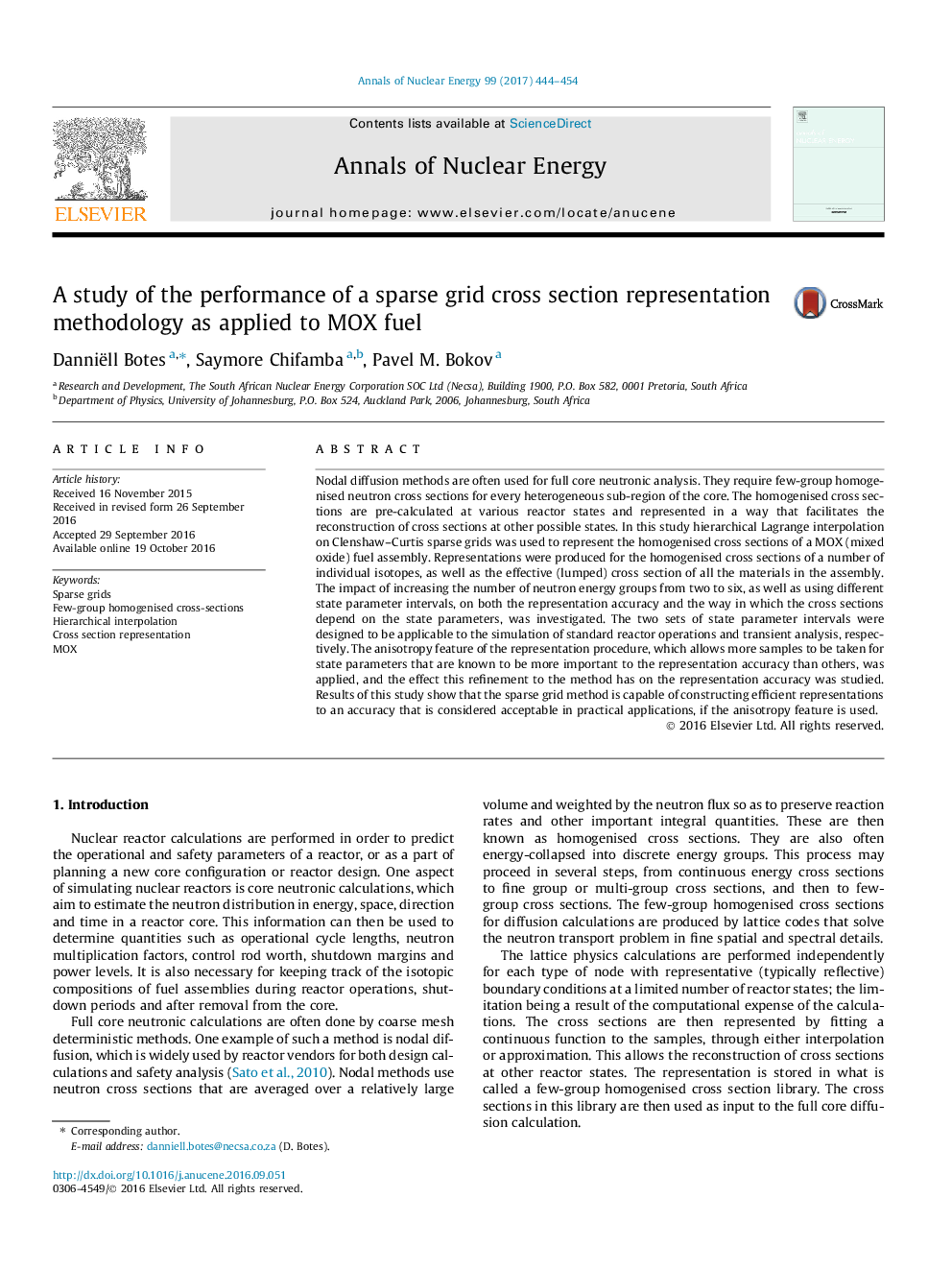| Article ID | Journal | Published Year | Pages | File Type |
|---|---|---|---|---|
| 8067442 | Annals of Nuclear Energy | 2017 | 11 Pages |
Abstract
Nodal diffusion methods are often used for full core neutronic analysis. They require few-group homogenised neutron cross sections for every heterogeneous sub-region of the core. The homogenised cross sections are pre-calculated at various reactor states and represented in a way that facilitates the reconstruction of cross sections at other possible states. In this study hierarchical Lagrange interpolation on Clenshaw-Curtis sparse grids was used to represent the homogenised cross sections of a MOX (mixed oxide) fuel assembly. Representations were produced for the homogenised cross sections of a number of individual isotopes, as well as the effective (lumped) cross section of all the materials in the assembly. The impact of increasing the number of neutron energy groups from two to six, as well as using different state parameter intervals, on both the representation accuracy and the way in which the cross sections depend on the state parameters, was investigated. The two sets of state parameter intervals were designed to be applicable to the simulation of standard reactor operations and transient analysis, respectively. The anisotropy feature of the representation procedure, which allows more samples to be taken for state parameters that are known to be more important to the representation accuracy than others, was applied, and the effect this refinement to the method has on the representation accuracy was studied. Results of this study show that the sparse grid method is capable of constructing efficient representations to an accuracy that is considered acceptable in practical applications, if the anisotropy feature is used.
Related Topics
Physical Sciences and Engineering
Energy
Energy Engineering and Power Technology
Authors
Danniëll Botes, Saymore Chifamba, Pavel M. Bokov,
